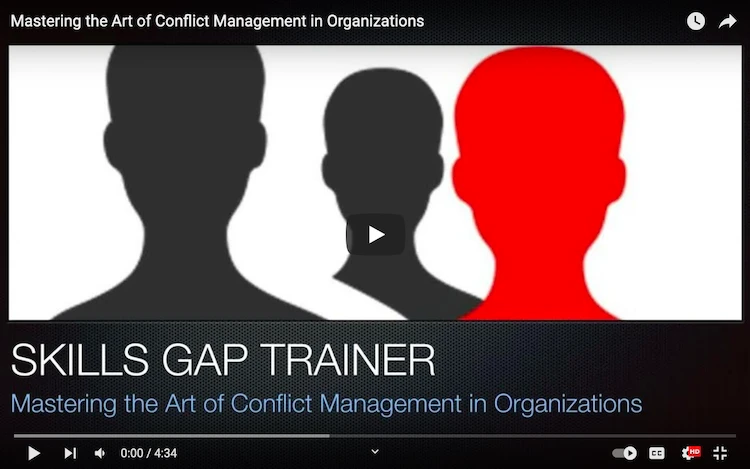Conflict is inevitable in any organization as individuals with different values, beliefs, and goals strive to work together. Navigating these waters successfully is a crucial aspect of effective leadership. This article aims to provide a comprehensive guide to managing conflict within an organization, weaving in related concepts from the realms of management psychology, human resources, and leadership.
-
Understanding Conflict
Conflict arises in organizations for numerous reasons – opposing views, disagreements, and moments of tension during various activities. The complexity of human personality and interpersonal dynamics contribute significantly to these conflicts. From a psychological perspective, conflicts can arise from a lack of motivation, negative psychological patterns, and even psychological disorders. These factors can influence the judgement of candidates during the interview process, leading to potential errors and biases that may subsequently contribute to conflict within the team.
-
Role of Leadership in Managing Conflict
The leader or manager’s role in conflict management is critical. Their ability to regulate conflict, provide each side the opportunity to voice their views, and ensure mutual understanding can significantly impact the outcome. They should maintain a controlled, composed, rational, and logical demeanor to prevent situations from escalating. This highlights the importance of not just technical skills but also soft skills in leadership. Leaders should ideally possess competencies in conflict negotiation, high-stakes negotiation, and conflict management techniques, all crucial aspects of high-performance team management.
-
When Conflict Escalates
Unfortunately, conflicts can sometimes escalate despite the leader’s best efforts to regulate them. Here, it is essential to understand the difference between escalating aggression and inhibiting aggression. The choice to escalate aggression often reflects prioritizing one’s interests over the relationship’s importance, leading to a loss of trust and permanent scars. On the other hand, inhibiting aggression signifies a choice to preserve the relationship. Understanding these dynamics can guide leaders in reducing tension or escalating conflict strategically.
-
Strategies for Conflict Resolution
Leaders can adopt several strategies for conflict resolution based on the context. This can include utilizing professional development programs and training, encouraging the development of relevant skills, and investing in employee well-being. Regularly analyzing worker competencies and addressing skills gaps can also contribute to reducing potential sources of conflict.
-
Role of Human Resources
Human resources also play a significant role in conflict management within an organization. Literature and training programs in this field can provide valuable insights into resolving conflicts and promoting a healthy working environment. The process of hiring itself can be refined to minimize potential conflicts by reducing biases during interviews and seeking candidates with the ability, skill, and intelligence to work collaboratively.
-
Understanding the Larger Context
Finally, it is crucial to appreciate that managing conflict in an organization doesn’t exist in a vacuum. It’s affected by larger societal and marketplace dynamics, including developments in technology and changes in labor markets. Leaders must be adaptable and capable of negotiating these broader challenges as they strive to manage conflict within their organizations.
Conflict, when managed effectively, can act as a catalyst for growth and innovation in an organization. Leaders who can navigate these challenging dynamics will not only contribute to their organization’s success but also help create a more harmonious, productive working environment.
Related books and resources:
“Getting to Yes: Negotiating Agreement Without Giving In” by Roger Fisher and William Ury – This classic book on negotiation provides fundamental strategies for conflict resolution that respect all parties’ interests.
“Crucial Conversations: Tools for Talking When Stakes Are High” by Kerry Patterson, Joseph Grenny, Ron McMillan, and Al Switzler – Offers techniques for approaching high-stakes discussions in a way that prevents escalation and promotes mutual understanding.
“The Five Dysfunctions of a Team: A Leadership Fable” by Patrick Lencioni – Although primarily about team dynamics, this book offers insights into the root causes of organizational conflict and how to overcome them.
“Difficult Conversations: How to Discuss What Matters Most” by Douglas Stone, Bruce Patton, and Sheila Heen – Provides a step-by-step approach to having those tough conversations, an essential skill in conflict management.
“Conflict Resolution for the Helping Professions” by Allan Barsky – Offers strategies specifically for conflict resolution within organizations, focusing on maintaining professional and ethical standards.
“Emotional Intelligence: Why It Can Matter More Than IQ” by Daniel Goleman – This book provides a deep dive into understanding emotions and how they drive our behaviour, a critical aspect of managing conflict.
“Dare to Lead: Brave Work. Tough Conversations. Whole Hearts.” by Brené Brown – Focuses on how vulnerability and courage can transform the way we lead, including managing conflicts.
“The Conflict Resolution Toolbox: Models and Maps for Analyzing, Diagnosing, and Resolving Conflict” by Gary T. Furlong – Offers a range of different approaches for managing conflicts, providing leaders with multiple tools to handle different scenarios.
“Negotiating the Nonnegotiable: How to Resolve Your Most Emotionally Charged Conflicts” by Daniel Shapiro – Explores how to resolve deeply rooted emotional conflicts, providing insight into more complex organizational disputes.
“The Dynamics of Conflict: A Guide to Engagement and Intervention” by Bernard Mayer – This book provides a framework for understanding and addressing conflicts in a way that leads to positive, lasting change.
To see our Donate Page, click https://skillsgaptrainer.com/donate
To see our Instagram Channel, click https://www.instagram.com/skillsgaptrainer/
To see some of our Udemy Courses, click SGT Udemy Page
To see our YouTube Channel, click https://www.youtube.com/@skillsgaptrainer
